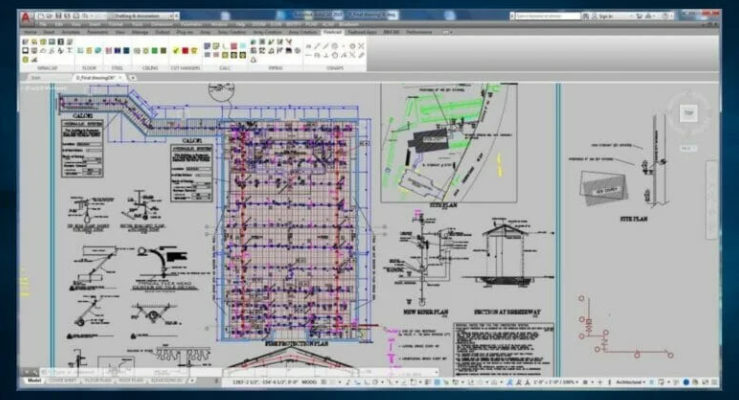
Introduction
Technology’s advancements have been crucial in agriculture and landscape management for increasing productivity and making the best use of available resources. Artificial intelligence (AI) integration into Sprinkler Designs software is one notable development that has revolutionized the planning and execution of irrigation systems. This innovative technology offers previously unheard-of levels of precision, cost-effectiveness, and water conservation while also streamlining the intricate process of irrigation system design.
The Need for Intelligent Sprinkler Design
Effective irrigation is crucial for ensuring healthy crops and vibrant landscapes. In the past, creating an irrigation system required a great deal of math, hand measurements, and in-depth knowledge of a variety of variables, including soil composition, plant water needs, and regional weather. But these systems’ intrinsic complexity frequently resulted in less-than-ideal designs, which wasted water, distributed it unevenly, and raised operating expenses.
Enter AI-powered sprinkler design software, which addresses these challenges by leveraging advanced algorithms and machine learning capabilities. These tools can process vast amounts of data, analyze it in real-time, and generate optimized sprinkler system designs tailored to the specific needs of the area in question.
Key Features of AI-Driven Sprinkler Design Software
Data Integration and Analysis:
AI sprinkler design software begins by assimilating a wide range of data, including soil characteristics, topography, plant types, and historical weather patterns. Through machine learning algorithms, the software learns to recognize patterns and correlations, allowing it to make informed decisions based on the unique conditions of the designated area.
Precision Mapping:
One of the significant advantages of AI in sprinkler design is its ability to create precise and detailed maps of the irrigation area. This includes identifying optimal sprinkler placement, determining the ideal nozzle types, and calculating water flow rates. The result is a customized irrigation plan that minimizes water wastage and ensures uniform coverage.
Dynamic Adjustments:
Traditional irrigation designs often struggle to adapt to changing environmental conditions. AI-powered software, on the other hand, continuously monitors real-time weather data and adjusts the irrigation schedule accordingly. This dynamic responsiveness ensures that the system operates at peak efficiency, even in the face of unexpected weather events.
Water Conservation:
With water scarcity becoming a global concern, the conservation of this precious resource is paramount. By taking into account variables like evapotranspiration rates, soil moisture content, and regional water limitations, artificial intelligence sprinkler design software excels at developing irrigation plans that are water-efficient. Users can save money by doing this, which also helps the environment.
User-Friendly Interfaces:
While the underlying technology is complex, AI sprinkler design software is designed with user-friendliness in mind. Intuitive interfaces allow users, including farmers and landscape architects, to easily input relevant information and receive optimized irrigation plans. This democratization of technology empowers users with varying levels of technical expertise to harness the benefits of AI.
Case Studies: Real-World Success Stories
Several real-world examples showcase the transformative impact of AI-powered sprinkler design software.
Increased Crop Yields:
In agricultural settings, farmers utilizing AI-driven sprinkler design have reported significant increases in crop yields. By tailoring irrigation plans to the specific needs of each crop and field, the software ensures that plants receive the right amount of water at the right time, leading to healthier and more productive harvests.
Water Savings in Landscaping:
Landscapers and urban planners have embraced AI-powered sprinkler design to create water-efficient green spaces. The software’s ability to factor in diverse elements such as plant types, soil conditions, and microclimates enables the creation of sustainable landscapes that require minimal water input.
Reduced Operating Costs:
Businesses and municipalities operating large-scale irrigation systems have witnessed substantial cost reductions through the adoption of AI technology. The precision of the designs leads to optimized water usage, resulting in lower utility bills and decreased operational expenses over time.
Challenges and Considerations
While AI-driven sprinkler design software offers tremendous benefits, it is essential to acknowledge and address certain challenges associated with its implementation.
Initial Costs and Training:
Implementing AI-driven sprinkler design software may require an initial investment in terms of software acquisition and user training. However, the long-term benefits, including water savings and increased efficiency, often outweigh these upfront costs.
Integration with Existing Systems:
For users with pre-existing irrigation infrastructure, integrating AI technology may pose challenges. Compatibility issues and the need for system upgrades must be carefully considered during the implementation phase.
Conclusion
In the irrigation industry, the incorporation of artificial intelligence into sprinkler design software is a revolutionary development. These tools have the potential to completely change how we manage water in landscaping and agriculture by utilizing machine learning and data analytics. From maximizing crop yields to promoting water conservation, AI-driven sprinkler design software is a testament to the transformative capabilities of technology when applied to real-world challenges. As the technology continues to advance, it holds the promise of creating more sustainable and efficient irrigation systems, contributing to a greener and more water-conscious future.






